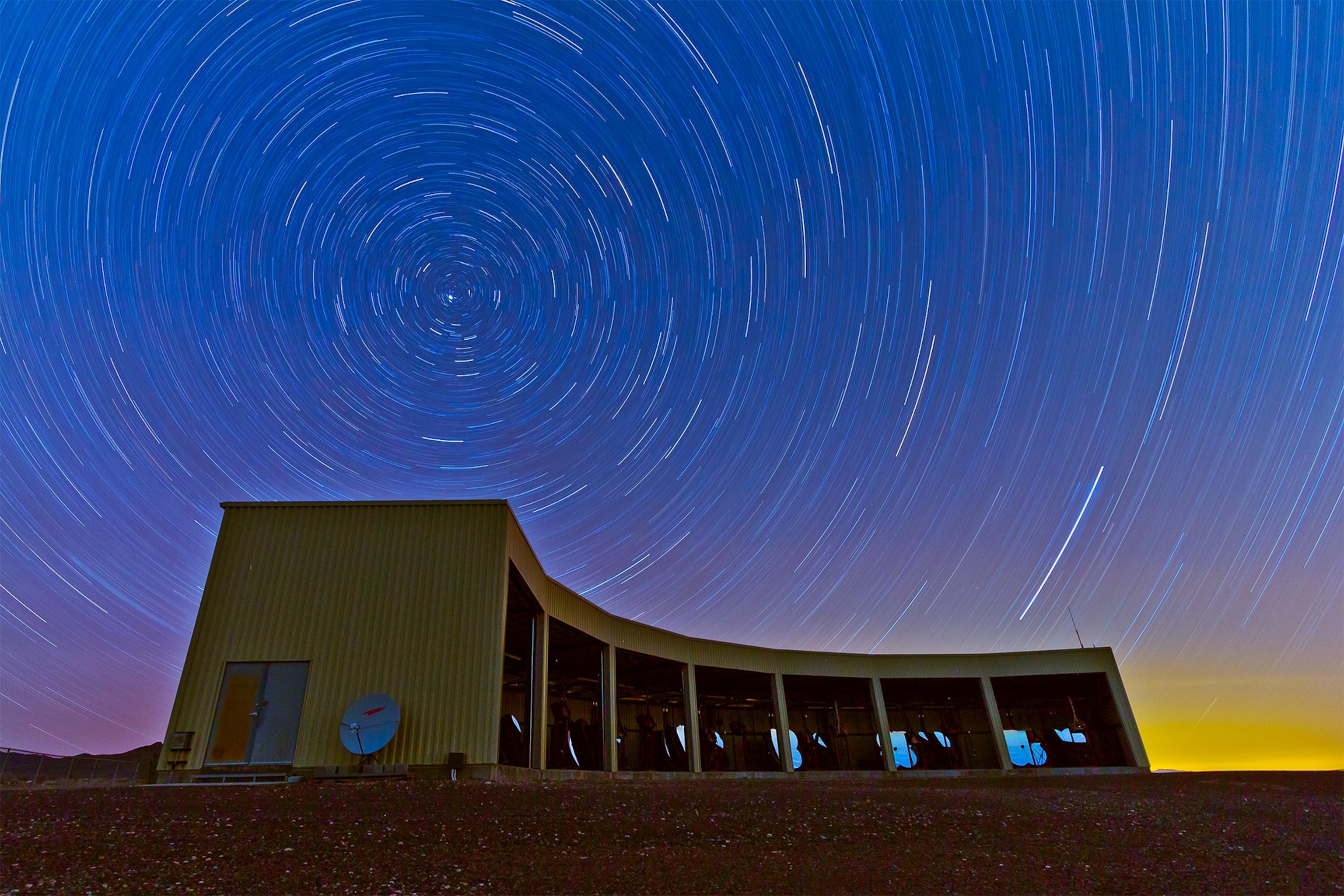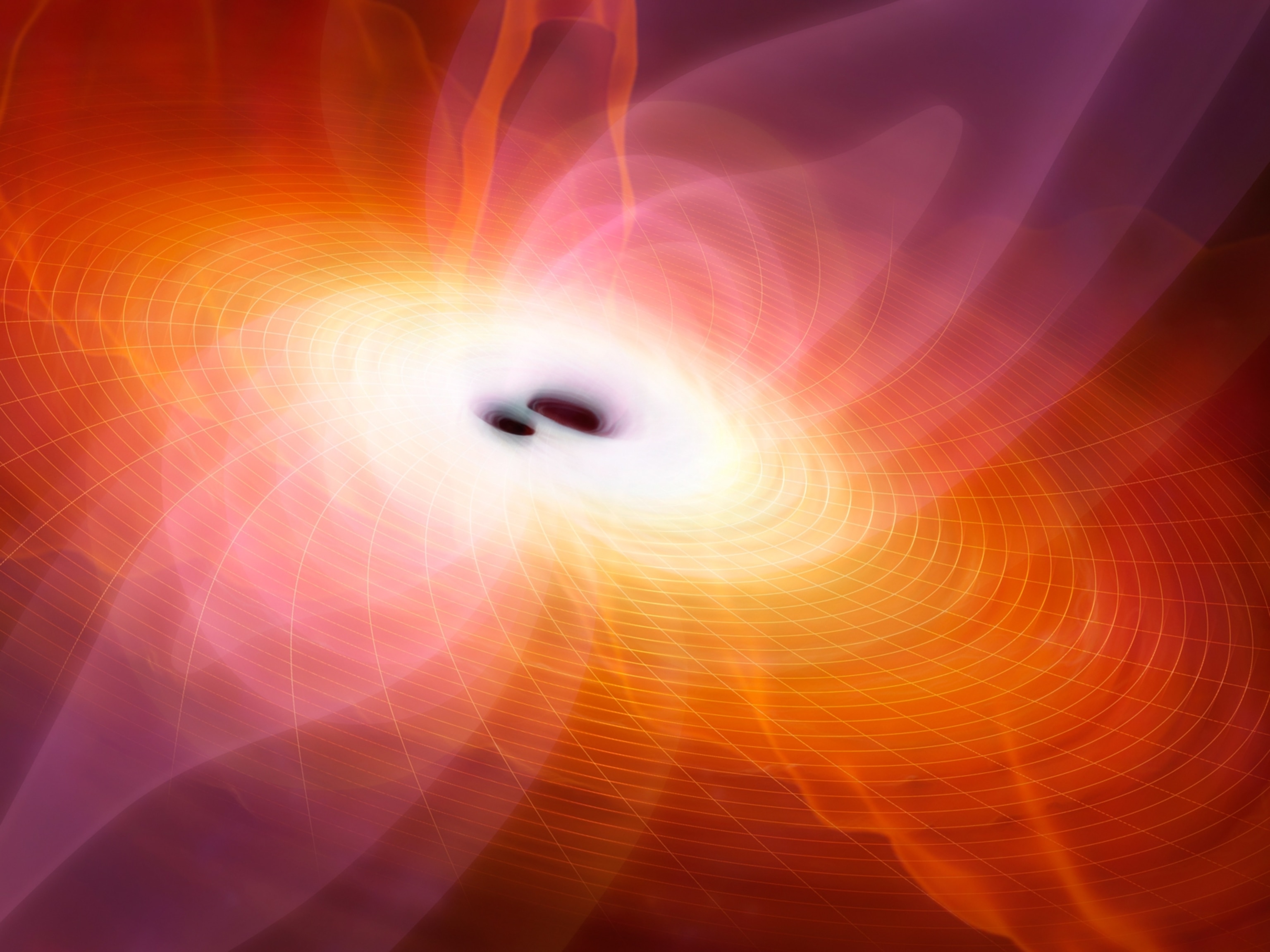
Cosmic-Ray Hotspot Discovered, Offering Clues on Deep Space Mystery
A powerful telescope may have found clues to the origin of ultra-high-energy particles that bombard the Earth.
A "hotspot" in the sky near the Big Dipper may be a major source of the ultra-high-energy cosmic rays that routinely bombard the Earth, report physicists using a giant array of specialized telescopes in the Utah desert.
Discovered just over a century ago, cosmic rays are really just the cores of atoms speeding through space, sometimes striking the Earth. Most of these atomic nuclei come from the sun or nearby exploding stars. But the origin of the most powerful ones, which come from beyond the Milky Way, is still a mystery.
The hotspot observations don't solve that mystery yet, said Gordon Thomson, a professor of physics at the University of Utah and lead author of the discovery paper, set to be published in Astrophysical Journal Letters. But they do give astronomers a specific patch of the sky to focus on.
"These are exciting times" for cosmic-ray researchers, said Karl-Heinz Kampert, a physicist at the University of Wuppertal in Germany, who does research at the Pierre Auger Gamma Ray Observatory in Argentina. Solving the mystery of the origin of the most powerful cosmic rays might offer astrophysicists views of natural experiments in high-energy particle physics, for free, ones that no lab on Earth could ever provide.
A Huge Patch of Sky
Identifying where the high-energy cosmic rays may be coming from is the good news. The bad news is that the patch is huge: It spans 40 degrees of the northern sky, which amounts to a circle 80 times the size of the full moon.
"It's a very large area," Thomson admitted, "and there's a lot of stuff in there."
The stuff that interests Thomson and his colleagues includes some of the most energetic events in the universe—jets of matter that spew from violently exploding stars, for example, or even bigger jets discharged by giant black holes. All might be the source of high-energy cosmic rays.
"Theorists have come up with several possibilities for what the source might be," said Thomson, "but we don't really know yet."
Whatever is generating these most powerful of cosmic rays gives the particles at least a billion billion electron volts of energy—the wallop packed by a major-league fastball concentrated into the minuscule volume of an atomic nucleus.
Catch a Cosmic Ray
Fortunately for people, ultra-high-energy cosmic rays and their weaker cousins don't penetrate the atmosphere. Unfortunately for astronomers, that makes it harder to figure out exactly where they come from.
Instead, the Telescope Array (that's its actual, rather generic, name) in Utah that Thomson and his colleagues used detects cosmic rays by spotting the faint flash of light and the shower of "secondary particles" created when a ray slams into an air molecule high in the atmosphere.
Ideally, the scientists would simply look back along the direction of each flash to pinpoint the origin of cosmic rays. But their trajectories through space are bent by intergalactic magnetic fields. That means it's impossible to simply trace one back precisely to where it originated.
So the hotspot, for now, is a rather broad area that contains all the possible origin points for these magnetically buffeted cosmic rays from deep space.
Wish Upon a Star
Still, it's a start, and the discovery of a hotspot allows astronomers to hone the search area down even more. Thomson and his colleagues hope to narrow it down further by expanding the array to detect more sky flashes.
If all of the cosmic rays in the 40-degree patch are truly coming from a single source—one black hole, for example—the Telescope Array could ultimately shave the patch down to a five-degree circle, Thomson said. That is not exactly a pinpoint, but small enough that conventional telescopes might be able to identify the actual source, or sources.
In Argentina, meanwhile, the Pierre Auger telescope has found not a hotspot but at least a "warm spot" in the Southern Hemisphere's sky that may represent another source of ultra-high-energy cosmic rays.
"It looks like the Telescope Array hotspot is just outside our field of view," said Gregory Snow, a physicist from the University of Nebraska-Lincoln, who does research at the Auger observatory. "That's why it's great to have cosmic-ray experiments in both hemispheres, so together they can view the entire sky."
Follow Michael D. Lemonick on Twitter.





